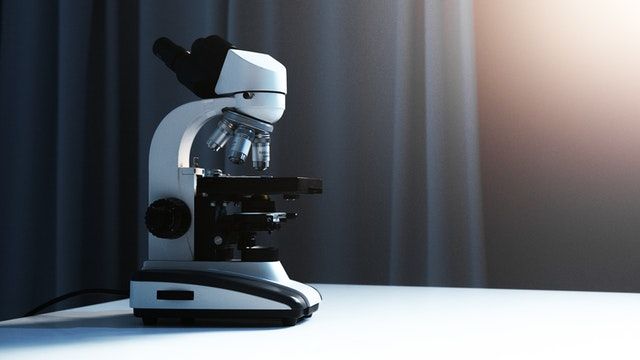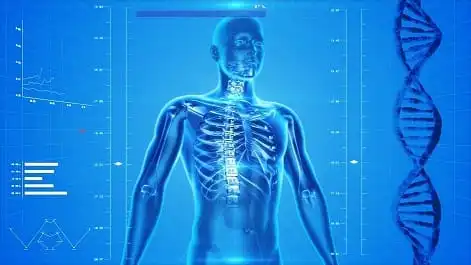How Artificial Intelligence Is Helping Curing Disease
In the medical and healthcare fields, Artificial Intelligence (AI) is widely used. AI has been a much-needed tool for treating illness, from the advancement of vaccinations to robotic surgery.

Artificial intelligence is the most discussed buzzword of the current era where technology is achieving unimaginable computation power and big data from every digital resource. AI was deployed earlier in robotics and data analytics, but medical science was blessed by it quite late, but not late enough though. In our previous article, we have discussed how AI is helping in disease diagnosis. The current article will focus on how medical treatment is aided by AI.
Medical treatment is carried out in the following phases that are sometimes mutually exclusive. They can be co-utilized but the co-occurrence of their need depends upon the disease on target.
- Immunization/ Vaccination
- Medication
- Surgery
All the above phases/ procedures are vigorously aided by artificial intelligence and robotics. The fundamental element through which such amalgamation of life and tech is achieved is the data. In immunization and medication, the key data is based on structural information of chemical compounds, their chemical affinities to certain targets, and all possible conformations in a given environment. While in surgical procedures, key data is achieved through image processing a scanning.
How AI is used in the creation of vaccines?
What is Vaccine?
A vaccine is a kind of preventive drug that is injected before disease breaks out to create immunity in the living organism. A vaccine is a dead or attenuated (weakened) causative agent of disease (bacteria or virus). When a vaccine is injected into the body, the dead or weakened microbe cannot produce infection but our defense mechanism reads the enemy and produces the army (antibodies) against it. When the vaccinated body is exposed to a real health threat, the immune system is trained already quickly responds against it and kills the causative agent. Sometimes, the vaccine is not an organism but just a compound that mimics the same structural analog of the causative agent. Such vaccines are called subunit vaccines.
What kind of data is used to create AI-based vaccines?
When a microbe enters our body, it is attached to the cell surface through a specific structural unit called ligand (antigenic determinant). An area where it attaches to the cell is called the receptor. By analyzing structural attributes of both receptor and ligand, we can achieve analogous artificial ligand binding to invoke antibodies in the body, without injecting the whole weakened parasite.
There are many renowned data repositories for chemical and drug molecular structural information along with their experimental documents. Among these, DrugBank, NCBI, ChEMBL, and Protein Databank are at the top of the list.
How does AI find what is the best vaccine ligand for a certain disease?
Ligand and receptor have certain physicochemical affinity based on structure as well as chemical compatibility. Fitting occurs perfectly if both are combined with exact modularity and have the least energy of bonding. If we feed an AI system with structural and physicochemical data of both ligands and receptors, it will automatically start selecting the best suitable vaccine candidates. This approach not only helps in finding strong candidates but also screens out all those candidates which can attach to other non-specific cellular sites, decreasing the side effects.
The first AI-developed human vaccine
The medal goes to Flinders University, South Australia. Professor Nikolai Petrovsky and his team introduced an influenza vaccine solely designed by an AI system called SAM (Search Algorithm for Ligands). The training set fed to SAM was based on compounds that can invoke an immune response and those that cannot. Then the program was trained to find out key features from the data that are responsible for immune system provocation.
When the key features are refined and determined, these features were used to create another program called the synthetic chemist. The Synthetic Chemist computationally designed trillions of compounds. These digital ligands we then again fed to SAM program to select the best candidate according to efficacy, structural compatibility, and specificity (avoiding off-target attachment).
The chemists and druggists then utilized these candidates to develop a real vaccine. Animal testing revealed astonishing results, declaring it the best influenza vaccine so far.
AI-assisted COVID-19 Vaccine Development
COVID-19 dismantled global routine life with 143 million reported cases and 3.06 million deaths at the time of writing. From the first case reported, scientist put their head together to cop such a calamity. Along with strict lockdowns and symptomatic treatment, the world needed a true vaccine to have immunity against the COVID-19 virus. The use of artificial intelligence (AI) for the COVID-19 vaccine can bring faster results.
Conventionally, it could take years to develop an effective vaccine, involving pathogenic infection studies, molecular dynamics of host-pathogen interactions, and development of vaccines followed by animal and human trials. But when a pandemic hits, we cannot wait for such a long time to have an immunity solution. Here comes the artificial intelligence that has promised to perform tasks swiftly and accurately than human intervention cannot perform.
As mentioned above, laboratories from all over the world are submitted their experimental and computational data regarding proteins and drug structures into their respective databases. This data worked as an ingredient for AI platforms to perform analysis to find out the best candidates for a vaccine against SARS-COV-2.
Challenges in developing COVID vaccine
Despite the complex structural and physicochemical properties of pathogen and host cell surface, a major challenge to create an anti-covid vaccine was the rapidly changing genetic code of coronavirus. Viruses are famous to change their shape and DNA/RNA to escape from the host’s immune system. Although there are few vaccines rolled out with different efficacies. Some vaccines are effective against certain viral variants, others are not.
So if an AI program can detect a pattern with which coronavirus changes its shape and genetic code, which would a breakthrough against COVID. A research team from Viterbi School of Engineering at the University of Southern California, under the supervision of Paul Bogdan, created an AI framework to rapidly identify COVID vaccine candidates in seconds. The team used the raw data from Immune Epitope Database (IEDB), a huge bioinformatics database for epitopes (antigenic determinant).
This study predicted 26 potential COVID vaccines, from which 11 were used to develop a multi-epitope vaccine that can attack spike proteins on coronavirus. These spike proteins are known to attach to the human host. AI framework is believed to detect every possible mutation in coronavirus.
All the above progress was not possible without the creation of an AI program to predict protein 3D structure. This program is built by DeepMind and is called AlphaFold2. AlphaFold2 won CASP Protein Folding Contest 2020 and achieved 89% accuracy that is an unprecedented advancement. If 100% accuracy is achieved, the only limitation to develop any drug or vaccine will be computational power.
Use of Artificial Intelligence (AI) in Drug Discovery
The pharmaceutical industry is one of the biggest industries by revenue. In 2020, the total revenue generated by the pharmaceutical industry was $1.25 trillion. Usually, a drug takes 4.5 to 10 years to get into the market after the successful animal and human clinical trials.
The core idea of using AI in drug discovery is to scan the potential of a compound to attach to the cell surface to invoke an immune response. Selecting a compound as a drug from millions of reported pharmacophores (ligands) has been a great challenge, let alone testing all of them on animals. Artificial Intelligence changed this nightmare into a piece of cake, screening millions of compounds to get a few of interest within seconds.
The rule of thumb to select a suitable drug for a certain disease is similar to that mentioned above with vaccines. All possible landing sites (protein domains/receptors) on the host and structure of drug compounds are designed computationally and tested for efficacy. Enormous computation power and huge biochemical data help to execute faster and accurate modeling experiments.
DSP-1181: First AI-designed drug for humans
The pioneer medicine created by artificial intelligence is for treating obsessive-compulsive disorder (OCD). This condition is a mental illness that forces the patient to think repeatedly or having an urge to do something again and again. It must not be confused with biting nails or negative thoughts. This project was a joint venture of British Exscientia (Famous for AI research in pharmaceuticals) and Japanese pharmaceutical firm Sumitomo Dainippon Pharma. Excientia announced DSP-1181 in January 2020.
The compound named DSP-1181 took only 12 months rather than years to send to trials. Exscienta chief executive Prof Andrew Hopkins is hopeful to broaden the drug research and introduce more drugs in no time in the future.
Halicin, the first Antibiotic by AI (second among drugs)
In February 2020, soon after the development of DSP-1181, James J Collins at MIT’s Department of Biological Engineering and Institute for Medical Engineering & Science, and his team published a paperregarding the advent of another AI-designed antibiotic. The target pathogen was Escherichia coli famous for causing multiple infections in the human body. The study aimed to establish an antibacterial drug efficient in killing E. coli.
The research team selected dataset 2335 reportedly antimicrobial compounds to feed to a neural network with intentions to find the most suitable antibiotic. After training the AI program, another data of 6111 molecules was given to the program that was experimentally approved to causes diseases in humans. Among them, the aim was to identify which compound can stop bacterial growth.
The training model successfully predicted 51 compounds by identifying their structural properties of antimicrobial activity. Among them, c-Jun N-terminal kinase inhibitor SU3327 was a special selection that was considered as deadliest of all. The major feature of that compound was that it had the potential to kill highly resistant Clostridium difficile and pan-resistant Acinetobacter baumannii infections. The compound was named “halicin”, as an AI system filmed in 1968 movie “Space Odyssey 2001”.
Artificial Intelligence tools for Drug Discovery
Drug discovery through artificial intelligence requires certain operations to be satisfied e.g. 3D modeling of compounds, ligand-receptor interaction analysis, incorporation of experimental data, a data repository of chemical compounds structure and chemical properties, pharmacophore designing, screening of high-affinity compounds, and sharing of computational outcomes through servers. We shall describe few AI-assisted platforms for drug discovery.
AlphaFold
AlphaFoldis so far the most accurate protein 3D model prediction tool designed by DeepMind. CASP20 winner tool uses experimentally verified crystalline structure of proteins and amino acid information to predict highly accurate novel protein structure. Researchers at DeepMind trained a neural network that uses the residue-residue contact information from already established structures. This model then can detect similar residual interaction (also considering the effect of neighboring amino acid residues) from untrained novel amino acid sequence (protein/polypeptide).
Chemputer
Chemputer is a marvelously built AI system for chemical programming. It is a complete “chemical 3D printer” with an AI program as well as a robotic chemist chamber. It was developed by Leroy Cronin at the School of Chemistry at the University Of Glasgow, UK. The AI software is built-in PyCharm as Python IDE. The robotic chemist chamber is a modular robotic system driven by chemical programming language. It contains approximately all the equipment needed to synthesize a drug. Currently, this platform is not for general pharmaceutical purposes but for narrow laboratory protocols.
DeepChem
DeepChem is a python based open-source platform for drug discovery that uses deep learning. It is based on Google’s TensorFLow framework incorporated with the deep learning algorithm “Scikit-learn” applied to chemoinformatics. It also uses RDKit Python framework to convert SMILES strings into molecular graphs, simplifying the operation. Interestingly, this platform uses NVIDIA GPUs for accelerated processing.
Use of AI and Robotics in Surgical Procedures
Surgery requires keen attention and care as little distraction can lead to lethal results. In healthcare studies, Surgery is the most difficult aspect based on need as well as risks involved. The use of AI in healthcare encouraged the use of AI and robotics in surgical procedures as robots can offer emotionless, swift, and highly accurate bruising.
First Robotic Surgery
The first robotic surgery was performed in 1985 by a surgical robot called PUMA 560. The procedure was brain biopsy required needle placement for fine extraction of a tumor. A live Computer Tomography (CT) scan guided the robot for needle insertion. A small hand tremor could cause unimaginable losses but robots do what they are born to do.
FDA Approved Robotic Surgeon (da vinci robotic surgery)
DaVinci Surgical System is the pioneer robotic surgeon approved by FDA for laparoscopic surgery. This system contains a surgeon’s console, a patient cart, four robotic arms, and high-performance scanners. More than 1700 systems are installed in hospitals globally with more than one million patients operated. Davinci robotic surgery can perform heart, urinary, gynecological, and general surgery.
First Autonomous Robotic surgery
Researchers under the supervision of Pierre Dupont, at Boston Children’s Hospital, described the first fully autonomous robotic minimally invasive surgery. The autonomous robotic catheter guided itself through the leaky valve of the pumping heart in an animal model. A robotic catheter was equipped with optical touch sensor having a roadmap of cardiac build with prior scan reports. AI program guided the catheter to enter the heart chamber and locate the leaky valve.
Robotic hernia surgery
Hernia is a medical condition in which certain tissue or small organ leaves its position or cavity. Groin hernias are the most common type of hernia. Not all hernias require surgeries but when they do, we have to select whether you want to be operated manually or by robots.
Robotic surgery is an advanced form of laparoscopic surgery. Former involves robotic arms controlled by a surgeon, while the latter gives instruments to the surgeon himself.
Robotic kidney surgery
Kidney surgery requires extreme focus as nephrons are quite thin and small in size, and little carelessness causes a gradual loss of life. The state-of-the-art robotic kidney cancer surgery is performed at The Mount Sinai Hospital, Beth, Israel. It offers minimally invasive kidney surgery assisted with real-time ultrasound guidance, without disrupting the blood flow. Robotic kidney surgery recovery time is quite lesser than conventional surgeries as it requires the smallest bruising.
Robotic heart surgery
Robotic Cardiac surgery is performed using an advanced robotic chamber including robotic arms, surgeon’s console, and real-time scanning (plus laparoscopic camera for on-spot 3D live imaging). The most widely used robotic heart surgery is also called da Vinci surgery named after the robotic surgical system named Da Vinci Surgical System.
Robotic heart surgery can become a dire need when there are multiple cardiac artery leakages or complex heart damages. Since the opening of diaphragms is not quite wide open, it becomes difficult to hold more than 4 spots by hand. 4 or 6 armed robotic surgeons can handle the situation alone, improving the success of the operation.
Advantages of robotic surgery
Robotic surgery assures error-free, less painful, early recovery surgery. Since machines do not feel or fear, complications or difficulty of the case does not tremble the robotic hands. It also reduces the surgery time and eliminates the wait time for the surgeon to get ready, physical as well as mentally. Patients all over the world feel satisfied with robotic surgery.
Artificial intelligence and robotics are becoming artificial messiahs promising to diagnose and treat almost all kinds of ailments. Huge patients and experimental medical data applied to AI systems are increasing the treatment efficiency. The future of medical science is going in the technology hands, putting less pressure on human doctors and paramedical staff.


